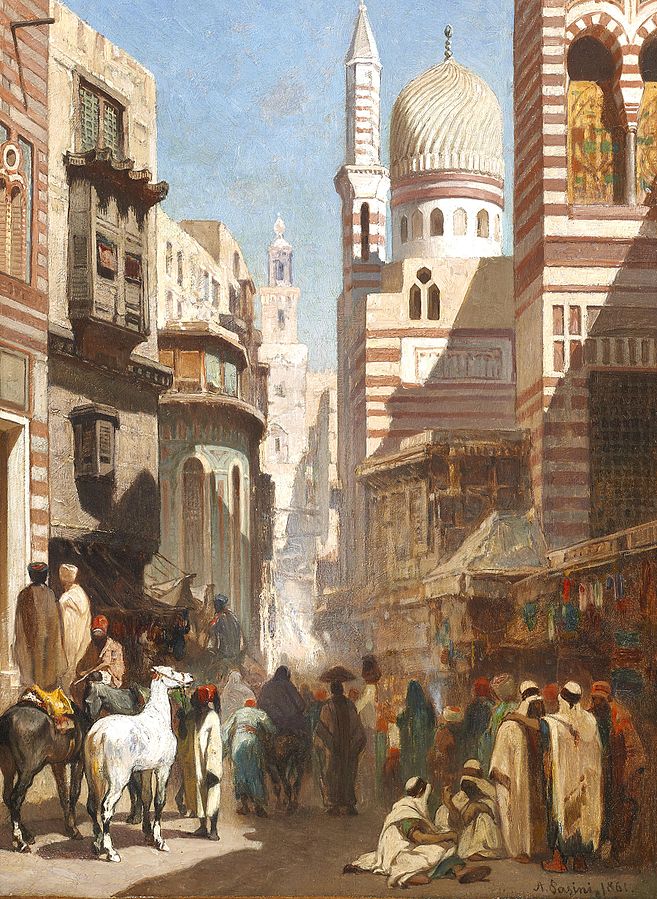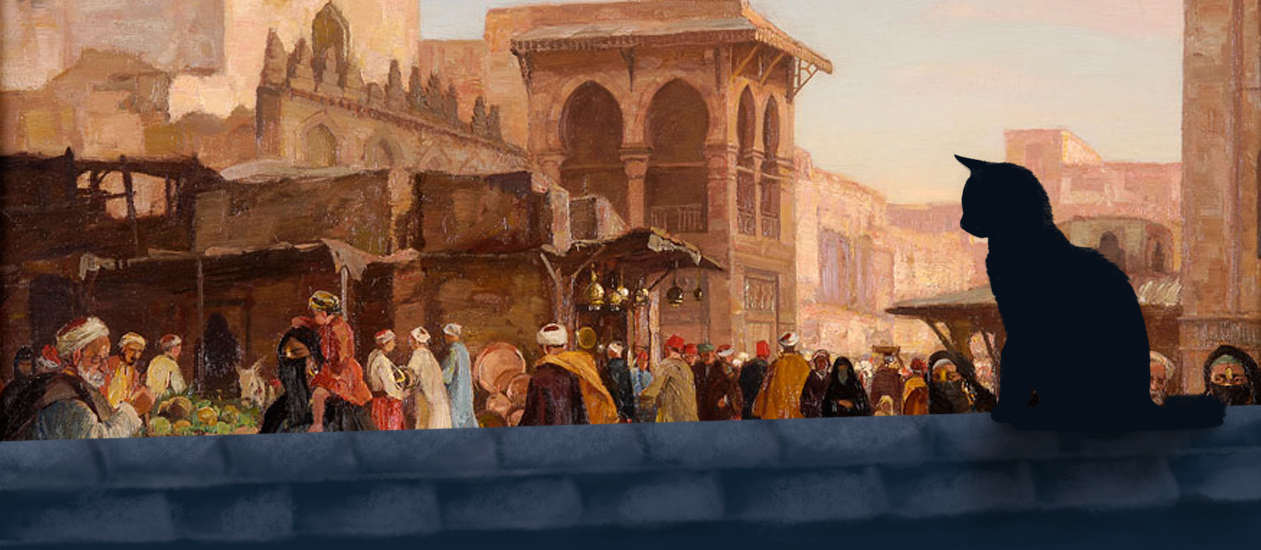Cairo
I'll never forget the first time I passed through Cairo.... I went ashore to look for a trinket for my girl, and got lost in one of the markets. There were so many colours in the stalls, so many languages being shouted by hagglers, and so many scents from the spices, animals, and fruits that I came down with a headache and had to find some shade in a date tree to sit and rest. - Anonymous sailor from India, 1721
Cairo is the capital of Venetian Egypt. In some ways, the history of Cairo is the history of Egypt, as it contains over 80% of the colony's population. It's the epicentre of Egypt, and the linchpin of trade between the east and the west.
Industry & Trade
Trade is the most significant business in Cairo. Not only does the city collect a tax from every merchant that makes port, plus a fee for the use of the canal, but also many local businesses stay afloat thanks to the constant influx of travellers passing through. They say that anything you might be looking for can be found in a Cairene market - assuming you can find it in the sensory overload of people, shouting, bright colours, and the thick scent of exotic spices.
Cairo is by far the most populated city in Egypt and the bulk of the colony's industries are centred in Cairo. Textiles are one of Egypt's major exports, and though the cotton is grown outside the city along the Nile, it is processed and dyed within Cairo. Textile mills powered by pathstones dominate large sections of the city.
History
Cairo is an ancient city. Its strategic location just upstream of the Nile Delta means it has been a centre of Egyptian culture for thousands of years.
In the 13th century, it was the capital of the Mamluk Sultanate. The Mamluks demolished many of the palaces belonging to their predecessors, the Fatimids, and replaced them with new buildings. They expanded the city outward while also building it up in the centre. Under the Mamluks, Cairo began to reach a truly impressive size.


Al-Khudayri street, Cairo by Alberto Pasini
In 1355, the Mamluks fell to the Republic of Venice. The Venetians retained Cairo as the capital of their new colony and the Venetian governor took up residence in the former Mamluk palace. Under Venetian rule, Cairo continued to expand.
The biggest cultural change came about in the 16th century with the establishment of the Church of Venice. This saw many Coptic Christians, previously about 15% of the city population, convert to the new Christian religion to gain favour with the ruling class. Venessian churches sprung up throughout the city, ocassionally taking over formerly Coptic churches. Today, Venessians make up about 8% of the city's population, primarily in the upper classes.
The next significant change came with the construction of the Cairene Canal in 1601. This canal connected the Nile with the Red Sea, facilitating trade from the Mediterranean to the Indian Ocean without needing to go around Africa. Cairo became one of the busiest ports in the world and is considered the chief crossroads of east and west.
Today, Cairo is a bustling trade city that channels the majority of its wealthy back to Venice.
Alternative Name(s)
القاهرة (al-Qāhirah)
Type
Large city
Population
312,000
Inhabitant Demonym
Cairene
Owning Organization


